Tiles for walls in the corridor: unusual ideas
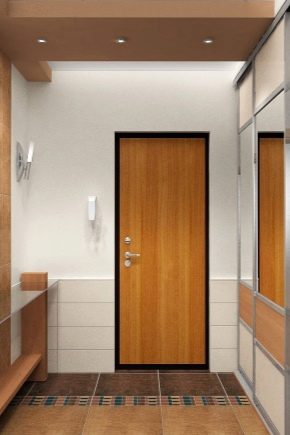
The corridor is the central "axis" of the apartment. This is the first room where residents or guests go. In order for the first impression of your apartment to remain positive, you need to make an effort and make the corridor visually attractive.
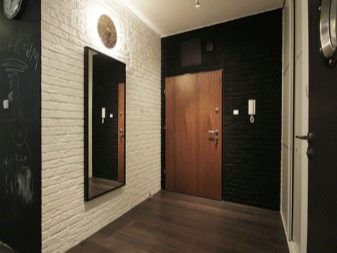
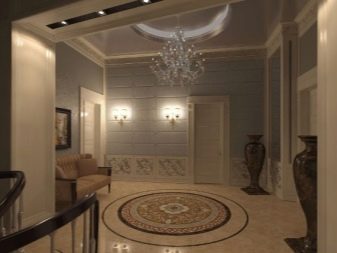
A corridor is a room where there is the greatest traffic and, in addition to the decorative component, you need to think about the practicality of this room. You need to think about this especially if you have animals or small children who often spoil the walls. Tile is a universal repair material. In this article, we will show you how you can use tiles to decorate the walls in the hallway.
Types and features
As a material for wall decoration, tiles have long been used not only in bathrooms, but also in other rooms. Currently, a huge variety of attractive finishing materials are produced, which are very popular with designers, craftsmen and repair customers. Walls faced with high-quality tiles are not inferior in strength to concrete, and retain their impeccable appearance for a long time. These properties are achieved by the method of manufacturing the finishing material using high temperatures.
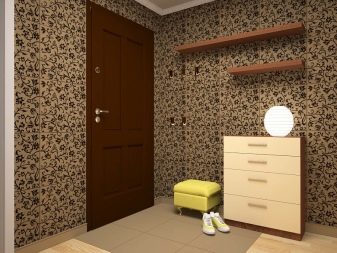

The material has a high density, which gives it increased moisture resistance and frost resistance.
There are two classes by which piece tiles are made:
- Class A - made using a special technology, it is distinguished by a smooth, flat surface and clear, correctly defined edges.
- Class B - is formed under the press and has not quite clear dimensions and shapes.

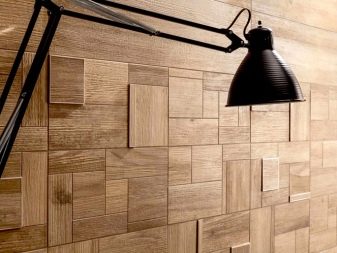
The finishing material differs in its ability to absorb water.
According to this indicator, the tile is divided into 4 classes:
- Class I - less than 3%.
- II A class - 3-6%.
- II B class - 6-10%.
- III class - more than 10%.
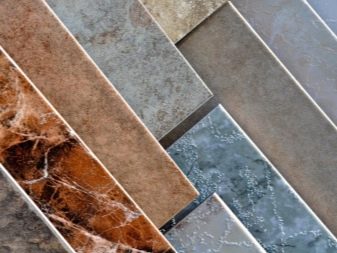
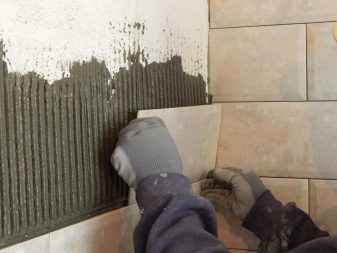
You can read all these data on the packaging of the material. Various synthetic products are used to wash the finishing material, which can be aggressive and ruin the tiles. To determine its stability, the material is marked with the letters: A, AA, B, C, D. The degree of resistance varies from the most resistant (A) to the most unstable (D).
Special signs are applied on the packages: wall tiles differ from the floor by the hand on it.
The tiles differ in the type of surface:
- Glossy - with a smooth surface that perfectly reflects light. Maintenance of such tiles should be regular due to the fact that dust and stains are clearly visible on it;
- Matte - easier to care for and gives the room more comfort and warmth;
- Embossed - can have both glossy and matte appearance and is complemented by an embossed pattern.

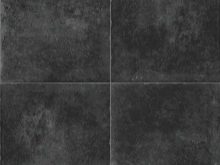
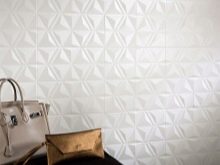
Materials (edit)
Depending on the material, tiles are:
- Ceramic. It is one of the most used finishing materials. Differs in a small price, reliability and unpretentiousness, a large selection. It is mainly used for kitchens, bathrooms, industrial premises.
- Porcelain. Durable material with increased resistance with a smooth surface. Outwardly looks like glass, is not covered with glaze. Suitable for kitchens and bathrooms. Due to its various finishing elements, it is widely used in various designs.
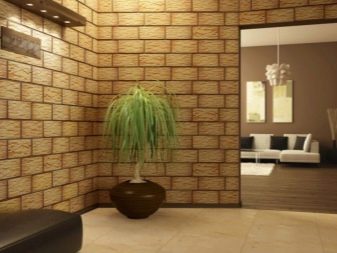
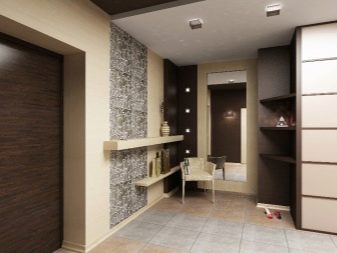
- Porcelain stoneware. Possesses increased durability. Outwardly similar to a variety of natural materials. Suitable for cladding living rooms.
- Mirror. It looks impressive, but it is better to use it in combination with other textures.Not suitable for rooms with high air humidity.
- Majolica. Small size Italian tiles are made from sandy clay. Has increased strength due to double firing. Glaze is applied on the front side.
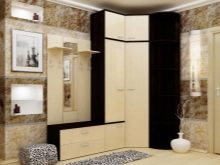
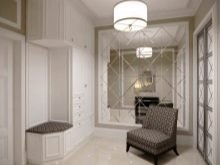
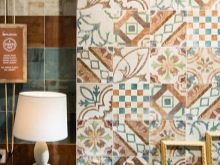
- Teralia. For production, valuable clay is used with the addition of sand and flux. This tile is also double fired. The high quality of this finishing material affects its increased demand.
- Cotto. Like the previous one, it is made of valuable clay, high-strength, of excellent quality. Externally matte, without the use of glaze. Due to its properties, it is mainly used in damp rooms.
- Clinker room. Due to its strength, it is very durable. It is made at high temperature and has increased moisture resistance. Suitable for use in different rooms.
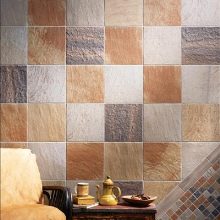

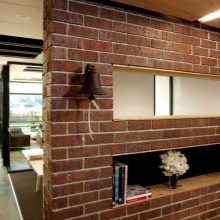
Corridors and hallways can be exposed to dust, dirt and moisture. Therefore, wall cladding with ceramic tiles and porcelain stoneware is the most suitable for these premises. These materials are highly durable and resistant to dirt.
Among the wide variety of ceramic tiles, you can choose one that is suitable not only for bathrooms and kitchens, but also for corridors. These can be highly artistic products with unusual textures like silk, wood, silver, gold, leather or metal. Finishing materials for corridors and hallways must have excellent performance. These characteristics correspond to materials with single or double firing.
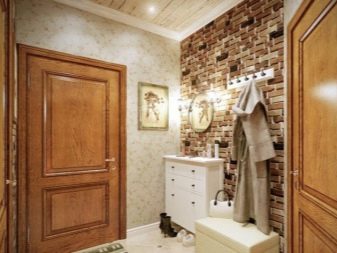
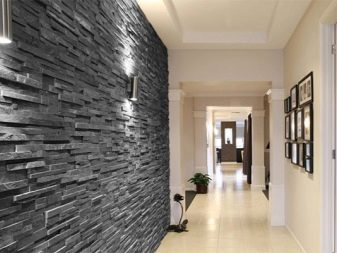
Design options
Ceramics
Ceramic tiles are environmentally friendly materials and can be used both for wall decoration and for flooring.
It has the following advantages:
- practicality;
- creative space for the designer;
- wear resistance;
- strength;


- duration of operation;
- resistance to various temperatures;
- moisture resistance;
- easy surface care.
Ceramic tiles look very impressive in combination with Venetian plaster, which imitates natural stones.
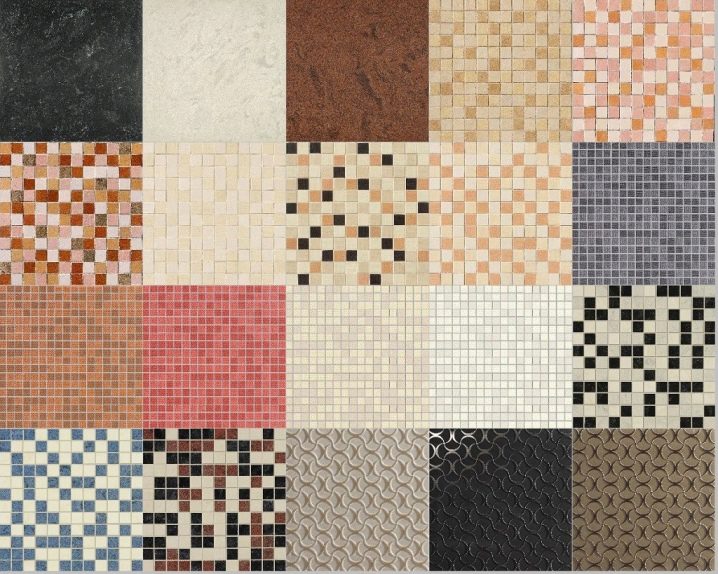
This combination is best suited for corridors with high ceilings. If the corridor is small, then a finishing material for silk is well suited. Such tiles will add softness to the room and visually enlarge it. Large tiles that imitate marble are perfect for modern style.
Stone tiles
The decoration of corridors is not practiced exclusively with ceramic tiles, much more often the decoration is complemented by stone or tiles in the form of sandstone and limestone. Such cladding looks much more expensive and more interesting. For example, you can lay out doorways with stone tiles.
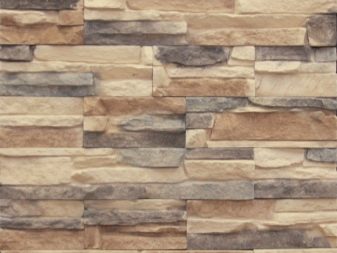
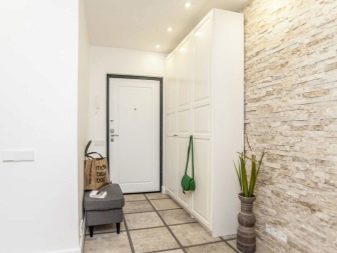
The stone will look good with a laminate coating. But you need to be careful with the color: it should not be dark, this will make the corridor look gloomy. Stone wall decoration works well with an eco-friendly style that uses natural materials.
Artificial stone
Artificial stone imitates natural and belongs to modern materials on a composite basis. Outwardly, such a stone cannot always be distinguished from the present. Since its weight is insignificant, this is one of the advantages for its use in wall decoration.

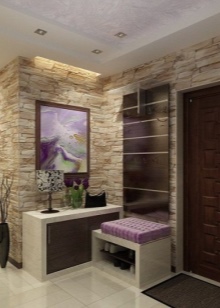
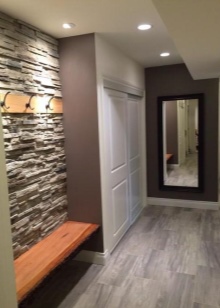
Its other advantages are durability and environmental friendliness, as it is made from plaster.
The disadvantages of artificial stone include the high price and thickness of the material. In order not to reduce the space of the corridor when working with artificial stone, point accents are placed. Only the lower parts of the wall are laid out with a stone, where there is more wear or doorways. Correct use of decorative stone will give your corridor uniqueness and beauty.

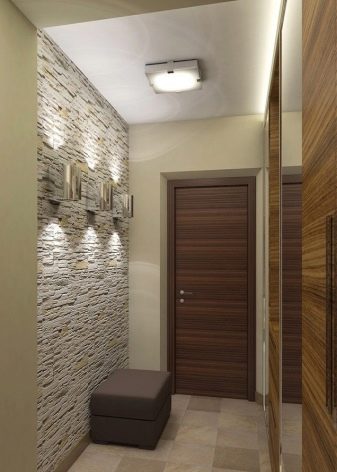
The main advantages of decorative stone are:
- High moisture resistance, as the stone is covered with a protective layer.
- Practicality and ease of care.You will need to periodically wipe the coating with a damp or dry cloth.
- High wear resistance.
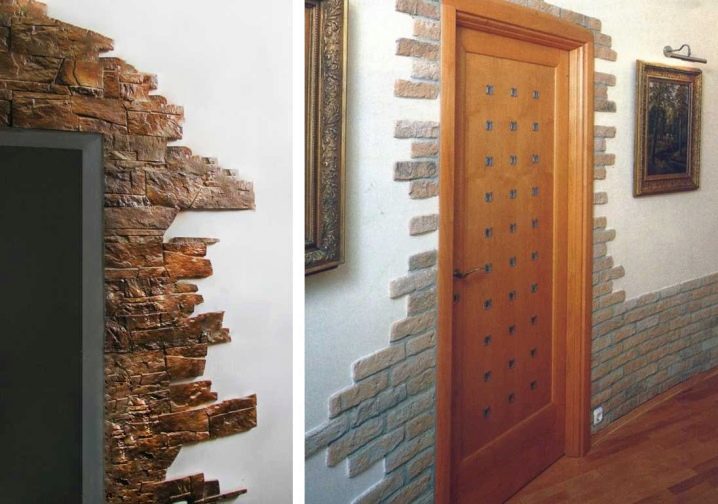
- Long-term operation with proper care.
- Easy installation work.
- Resistance to temperature extremes.
- Fire safety.
Clinker coating
The clinker is produced by firing clay at a high temperature. Previously, such a material was used only for the exterior decoration of buildings, now they have begun to use it for interior premises as well. A wall lined with clinker bricks will suit well not only the loft style, but also any other, if it is skillfully combined with other decorative elements.
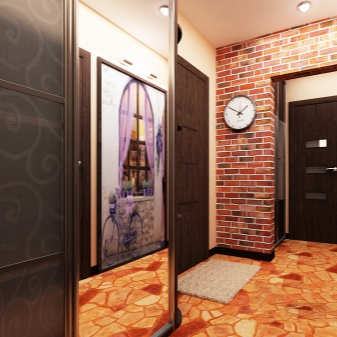
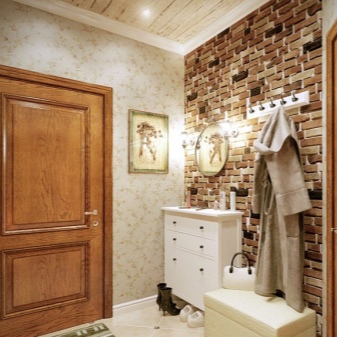
How to choose?
Before choosing a wall tile for a corridor, you need to decide which material texture is best for you. It should be noted that a glossy surface visually expands the space, while a matte surface reduces it. Finishing materials should not be annoying and too bright, it is much better if they cause a feeling of comfort and home coziness.


White convex tiles are classic, but they are more suitable for bathrooms, and will not look at all in the hallway. An exception will be the case when you need to visually enlarge a small space, besides, white color is perfectly combined with other colors.
When choosing a color, consider the overall stylistic solution of the interior. If your interior of the corridor is designed in a calm, natural style, you can purchase wood-like tiles. For the eco style, you can choose a tile in beige or green shades, but not monochromatic, but with a natural ornament.
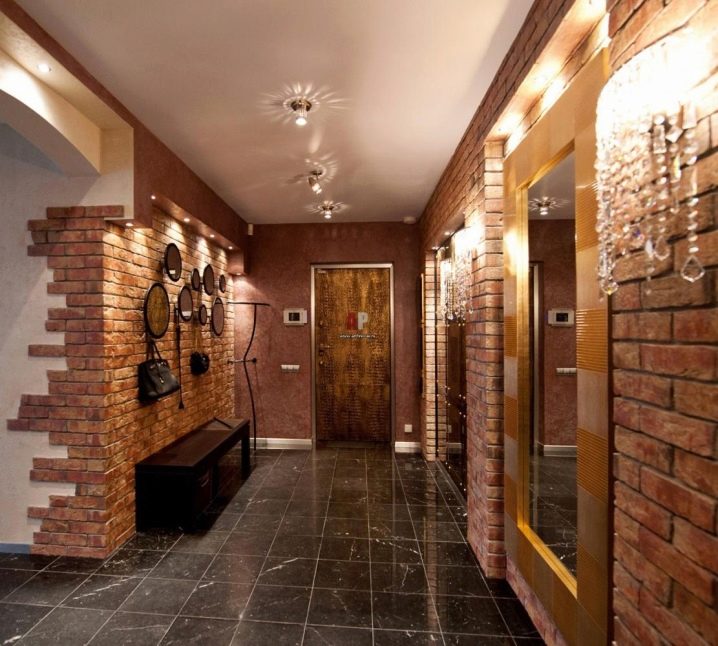
If you are fans of the Asian style, you can buy tiles with oriental patterns: picturesque plants, exotic fruits, animals and birds. All this variety is distinguished by bright, juicy colors with a predominance of gold and turquoise shades, which in the East are very fond of and refer to as signs of luxury and wealth. This style is best used for small corridors.
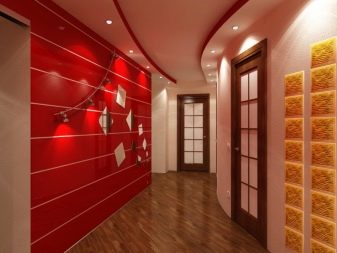
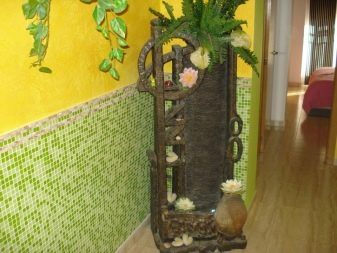
If you like to impress guests, you can purchase unusual material and make, for example, a hallway with a blue wall made of leather-like tiles.

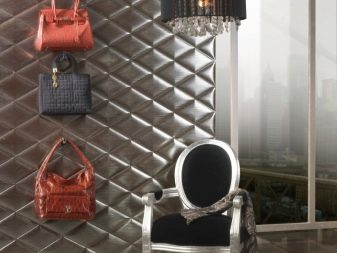
The cost of finishing materials varies greatly, anyone can choose the right product according to their financial capabilities. Tiles of Russian and Belarusian production are inexpensive, more expensive are Spanish, Italian, and German. You can also buy unique products from eastern countries.
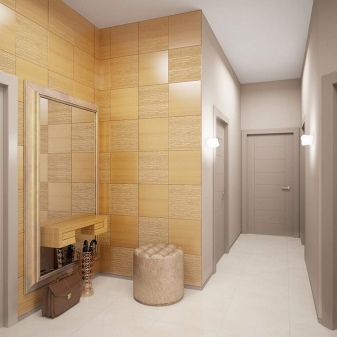
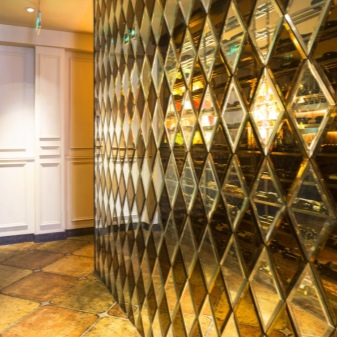
In conclusion, I would like to say that the tile is considered one of the most successful options for decorating the walls of the corridor. The offered variety of textures and colors gives a wide choice for your creativity to create a cozy and beautiful room.
For an overview of the facing tiles on the wall in the corridor, see the following video.













An interesting and useful article for me. Two cats and a dog involuntarily led to the idea of tiles in the hallway. We will choose. Thanks.
The comment was sent successfully.